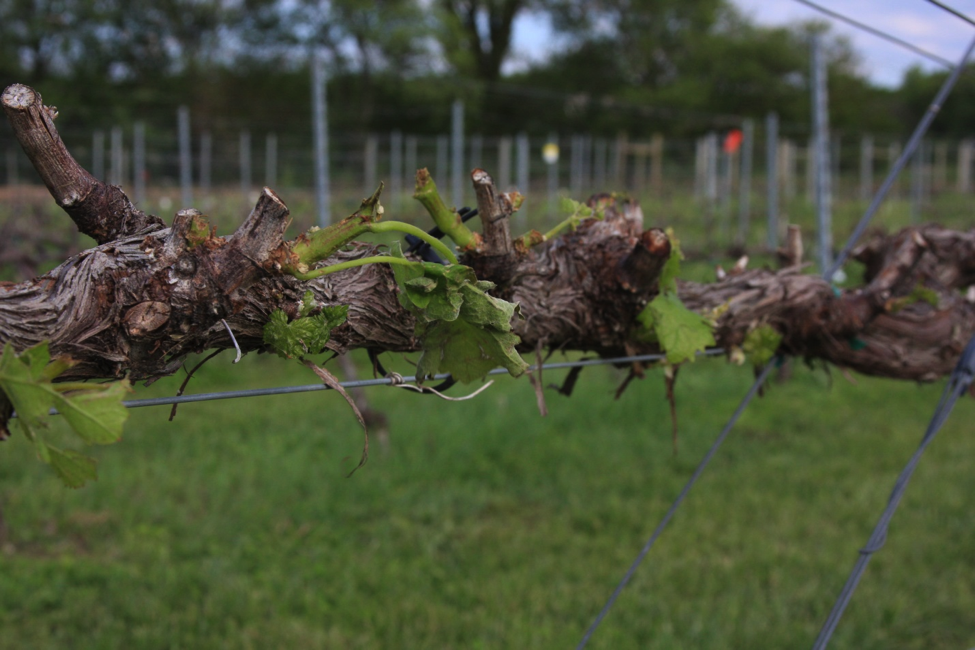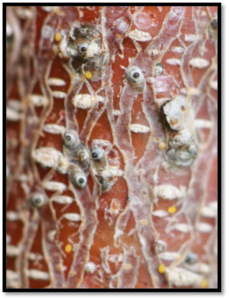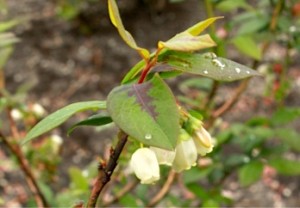Over the past 7-10 days it has become clear that a bacterial spot epidemic is underway. It is eerily reminiscent of the epidemic of 1997, although so far it does not appear as widespread or affecting all cultivars as that year. Many blocks are dropping leaves this week, and fruit lesions are beginning to appear. Remember that it takes about a week for leaf infections to appear, and about 2 weeks for those infected leaves to start dropping. It takes about 3 weeks for those same infections to show up on the fruit. Looking back at weather records over at CoCoRaHs (choose your dates and local observations) it appears that the severe winds of May 23, and the rains over the weeks that followed set up a conducive environment for the bacteria in southern counties. We are seeing leaf drop in many locations regardless of treatment. The coming week will tell the story of how much fruit infection there is. [Read more…]
Fruit Crops Edition
Seasonal updates on diseases, insects, weeds impacting tree fruit and small fruit (blueberry, cranberry, and wine grape). Fruit Pest Alerts are also available via this category feed.
Subscriptions are available via EMAIL and RSS.
Fruit IPM Report June 3, 2014
This week in Fruit IPM
- Peach
- Apple
- Pear
- Wine Grapes
- Scouting Calendar
- Blueberry
- Tree Fruit Trap Counts
- Blueberry Trap Counts
Click to View | Download PDF
Fruit IPM Report May 27, 2014
Click to View | Download PDF
This week in Fruit IPM
- Peach
- Apple
- Pear
- Scouting Calendar
- Blueberry
- Tree Fruit Trap Counts
- Blueberry Trap Counts
What to Do if Hail Hit Your Vineyard
If you were hit by a hailstorm on May 22nd, as we were at RAREC, you are probably making some hard decisions on what to do in the vineyard.

Hail-damaged cordon on a grape vine at Rutgers Agricultural Research and Extension Center. Shoots, leaves, and flower buds were severely damaged and most shoots were broken off.
Removal of dead and compromised leaves and flower clusters will help reduce development of fungal pathogens.
Stem wounding will be a big concern especially for vineyards with crown gall. Treatments that aid in wound healing or have bactericidal effects may provide some help. However, shoots severely damaged by hail may need to be pruned out.
New growth will continue to push as weather conditions allow. This new growth should be protected against black rot, powdery and downy mildews as you would in any other year.
Major Hail Storm Hits RAREC Research Farm
A major rain and hail storm occurred at the Rutgers Agricultural Research and Extension Center, Bridgeton during last Thursday evening, 22May. Hail stones the size of marbles fell for about 15 minutes. [Read more…]
Cranberry Insect Upate
The season has started very slow due to the cold weather. Insect activity is just starting to increase. Thus, growers need to intensify their scouting efforts. The following insect pests bear special mention for early-season scouting:
Blackheaded fireworm – Blackheaded fireworm eggs overwinter on the bed and usually hatch by around mid-May. It is important to catch the first generation, if possible, because the second generation occurs during bloom and is typically much more destructive. Blackheaded fireworm larvae can be detected by sweep net sampling and it is good idea to look along the edges of bed where vines first begin to grow.
Remember: blackheaded fireworm is much easier to control if detected during the early part of the season. [Read more…]


